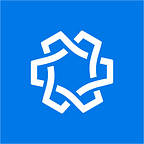Channeling Nonprofit Vision into Mobile App Development
Here’s a closer look at Blueprint’s partnership with the SAGE Youth Mentorship Project and our development process.
Every year, Blueprint partners with local nonprofits to create technologies to help them better achieve their missions. Today, we want to showcase this development process through the lens of one of these partnerships.
1. Building a Partnership
Last spring, the SAGE Youth Mentorship Project (SAGE) approached Blueprint to build a custom management application that would enable it to organize and communicate with mentors more efficiently.
As a UC Berkeley student-run org that connects local elementary school students with college mentors, SAGE is active in 10 Bay Area schools and rapidly expands every semester. This poses two main challenges:
- Managing each mentorship session
- Ensuring that mentors are kept accountable
In the words of SAGE’s current president, Michelle Kim:
“Having an application that streamlines the ‘busy’ work for our leadership team members would help us gain back the time that used to be spent logging hours and fixing errors manually. That can then be used to create better events, training programs, and relationships with liaisons and mentees.”
Each Blueprint project team has 5–6 members. Meet our SAGE project team (in order from left to right): Kelsey Lam, Charles Xue, Andrew Millman, Sameera Vemulapalli, and Erica Yin.
2. Determining Project Scope
The application required 2 main functions:
- Geo-tracking and verifying mentor attendance at their assigned school sites
- Streamlined announcements that admins can send to all mentors
In order to reach all mentors, the team decided that the mobile application for SAGE would need to be available for all smartphone users. As a result, the team pursued both Android and iOS development.
3. Workflow and Obstacles
Project workflow varies throughout the school year but mainly involves weekly meetings and work sessions — during which teams discuss and work on creating key features or fixing bugs. From there, teams meet every other week with their nonprofit partners to share progress and receive feedback.
Sameera Vemulapalli, one of SAGE’s developers, broke down SAGE’s development process into two main phases:
a) An initial phase last fall, when the team focused on building quickly and getting a minimum viable product up and working. More vital features, such as check-ins and recording request verifications, were tackled first.
“On my side, a lot of the work was done in short bursts rather than extended periods of time. The mobile development was super feature-driven — each addition to the codebase was usually for a large addition or something of the sort, especially first semester.”
b) A second phase of development, where the team is currently, which focuses on fixing small bugs and tweaking user experience details. In this process, the app becomes much more polished and user-friendly.
What sets the SAGE project team apart from Blueprint’s other teams is that the developers are essentially working in two mini project teams. Charles Xue leads the Android side of development, and Andrew Millman leads the iOS counterpart.
Developing features for both mobile platforms simultaneously has been challenging. However, the two have made sure the whole team stays on track to complete both versions by syncing up regularly on the progress.
4. SAGE: Major Takeaways from the Team
Charles Xue: By working on SAGE, I’ve learned a lot about what it takes to be an effective project leader, whether it’s asking for updates from everyone, communicating with the client about different objectives, and asking for feedback. Asking for feedback frequently is especially important for our team, because it helps us determine what functionalities to add and what needs to be prioritized.
Kelsey Lam: Developing for SAGE allowed me to learn how to program for Android one-on-one, which was entirely new for me. Even though the learning curve was steep, I learned a lot at a rapid pace. Every time I finished a tricky feature for the app, I felt a huge sense of accomplishment.
Erica Yin: Working on SAGE was especially valuable for me, because I learned to program for iOS without any previous background in mobile development. I went from needing every step explained to me to being able to basically build out entire features on my own. The most rewarding part of working on SAGE, though, was definitely deploying to the app store and seeing how excited SAGE members were about the app.
Andrew Millman: As the project leader for SAGE last fall, I probably felt the impact of our work most when we were able to deliver the app and test it in a few different schools. At that point, it felt like my job leading the team had paid off. We were able to present the product on time to test, which was all thanks to the hard work the rest of the team put in.
As more users start using the application during mentor sessions this spring, we look forward to seeing the full impact of this project!
Thank you to SAGE for partnering with us — and a huge shout-out to our incredible developers who’ve made this all possible.
